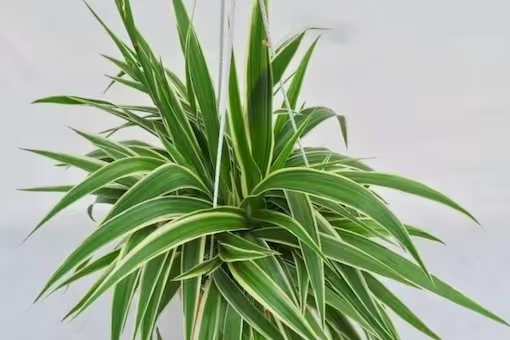Spider plants create a cluster of elongated, gracefully curved leaves in either all-green or white-edged patterns. These low-maintenance indoor plants thrive in hanging pots and were popular during the Victorian era. Discover how to cultivate spider plants indoors.
In the summer, spider plants might develop small white blossoms on lengthy stems, along with miniature spider-like offshoots known as “pups.” These pups resemble tiny spiders, giving the plant its name. While NASA once emphasised spider plants for their potential air-cleaning qualities, having a substantial number of plants would be necessary to observe any noticeable effects at home. Nevertheless, they remain a timeless and appealing addition to your living area.
Here are some tips for growing and maintaining spider plants –
• Cultivate spider plants in well-draining soil-based potting mix. They prefer consistent moisture, avoiding excessive dryness or sogginess.
• Place the plants in moderately bright, indirect sunlight. Avoid direct intense sunlight that might scorch their leaves, leading to brown tips and spots.
• Due to their rapid growth, spider plants can become root-bound easily. Repotting every two years is a good guideline.
• During summer, you can grow spider plants outdoors as annuals. They work particularly well along the edges of containers or beds, provided they’re shielded from direct sun exposure.
• Initially, water sporadically during growth; once mature (within a year), water moderately.
• During spring and summer, ensure the soil stays damp to promote growth. Prevent excessive drying of the soil.
• Keep room temperature and humidity at normal levels. Spider plants thrive in indoor conditions with temperatures ranging from 55 to 80°F (13–27°C).
• Fertilize every two weeks in spring and summer, but be cautious not to overdo it.
• Tip burn is a concern for spider plants, resulting from dry soil, low humidity, or accumulation of salts and chemicals in tap water. Maintain slightly moist soil, and avoid using water with fluoride or chlorine. Trim off brown tips when necessary.
• Remove brown spots from leaves by gently scraping them with your fingernail every few days.


